The national parks of the United States are a testament to the country’s diverse natural beauty and cultural heritage, attracting millions of visitors each year. These parks, numbering over 400, span across varied landscapes. Each park offers unique features.
The popularity of these parks is evident in the staggering visitation numbers. In 2022 alone, there were 311,985,998 recreation visits to these national treasures. The parks cater to a wide array of interests, with 38% of visits to recreation-focused parks, 30% to nature-focused parks, and 32% to historical/cultural-focused parks.
Furthermore, the parks are not just about scenic beauty but also offer a range of activities. For instance, visitors can engage in hiking, camping, wildlife viewing, and kayaking in Congaree National Park, or enjoy sandboarding and horseback riding in the Great Sand Dunes National Park in Colorado.
These activities, coupled with the unique features of each park, make the U.S. National Parks a must-visit destination for nature enthusiasts and adventure seekers worldwide.
Best National Parks in the U.S.
Yosemite National Park
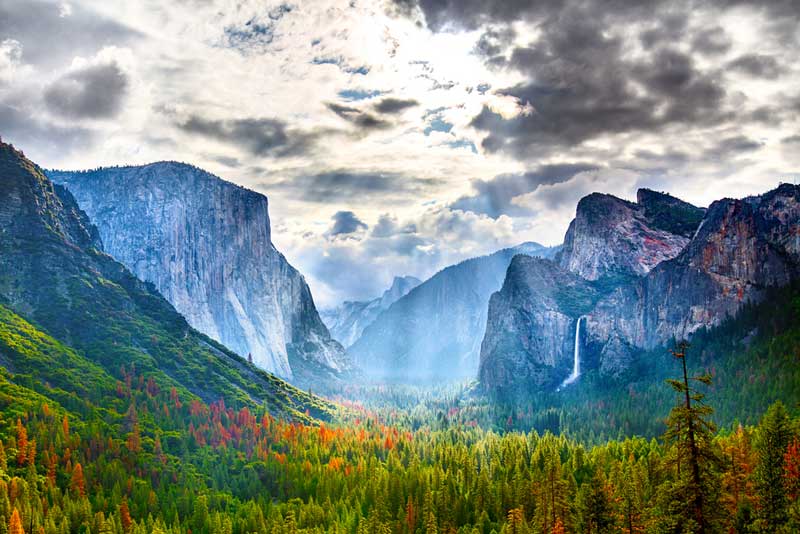
Yosemite National Park
Yosemite National Park, a beacon of natural beauty and wilderness in California, covers over 759,000 acres across four counties. Designated as a UNESCO World Heritage Site in 1984, it’s celebrated for its stunning granite cliffs, waterfalls, giant sequoia groves, diverse ecosystems, and historical significance.
The park’s geology is marked by iconic granite and remnants of older rock, formed through the uplift and erosion of the Sierra Nevada, and further sculpted by glaciers. Visitors are captivated by sights like the Tunnel View, offering panoramic views of El Capitan, Bridalveil Fall, and Half Dome.
Glacier Point provides a breathtaking overview of the Yosemite Valley, while Bridalveil Fall enchants with its towering presence. Yosemite is also a haven for hikers, with trails ranging from easy, accessible paths to challenging hikes like the Half Dome trek. The park is also a renowned destination for rock climbers, with El Capitan and Half Dome being iconic climbs.
Throughout the year, Yosemite reveals its beauty in different ways: spring brings gushing waterfalls, summer is perfect for outdoor activities, fall showcases colorful trees, and winter transforms the park into a snowy wonderland.
Zion National Park
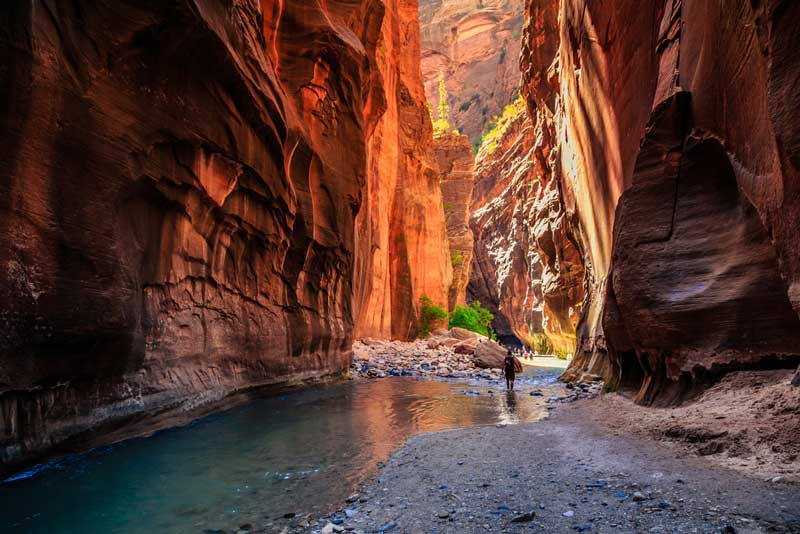
Zion National Park
Zion National Park, located in Utah, is known for its stunning sandstone cliffs that range from cream to pink to red. It’s a place where nature’s artistry is on full display, offering a landscape filled with narrow canyons, towering rock formations, and diverse plant and animal life.
The park’s most famous feature, Angels Landing, presents a challenging and exhilarating hike that rewards adventurers with sweeping views of Zion Canyon. Another highlight is The Narrows, where hikers wade through the Virgin River, enclosed by massive canyon walls. Zion also offers easier, family-friendly trails, providing opportunities for visitors of all skill levels to explore its beauty.
Throughout the year, Zion’s landscape undergoes dramatic changes, from the lush greenery of spring to the brilliant hues of autumn, making every visit unique.
Grand Teton National Park
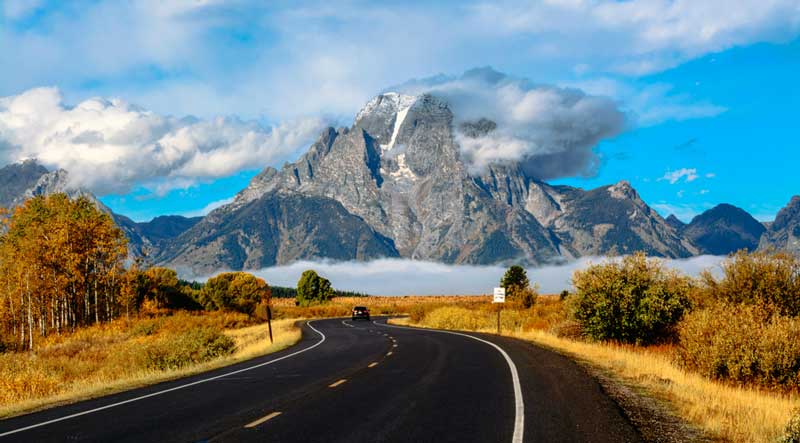
Grand Teton National Park
Grand Teton National Park in Wyoming is a marvel of the American wilderness, known for its striking mountain range, the Teton Range, and the serene beauty of Jackson Hole Valley. The park spans approximately 310,000 acres, featuring a diverse landscape of alpine terrain, lush valleys, and numerous lakes.
The park is a paradise for wildlife enthusiasts, with its abundant populations of elk, grizzly bears, and moose. Hiking trails range from leisurely walks along lake shores to challenging treks in the backcountry. The park’s pristine lakes, such as Jenny Lake and Leigh Lake, offer opportunities for kayaking and fishing.
Grand Teton is not just a summer destination; it transforms into a winter wonderland offering skiing, snowshoeing, and other winter sports, making it a year-round attraction for nature lovers.
Olympic National Park
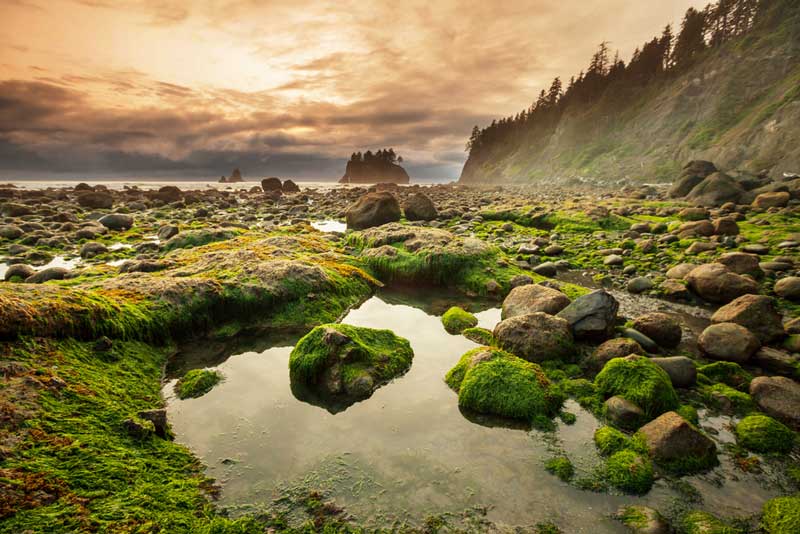
Olympic National Park
Olympic National Park in Washington State is a testament to the diversity of the American wilderness. This vast expanse of over 900,000 acres is distinguished by its three distinct ecosystems: temperate rainforests, sub-alpine areas, and the rugged Pacific coastline.
The park’s lush rainforests, like the Hoh Rainforest, are dense with mosses and towering trees, creating a green canopy that provides a unique hiking experience. The sub-alpine region is characterized by stunning mountain vistas and wildflower meadows, particularly around Hurricane Ridge, offering panoramic views of the park’s rugged terrain.
Olympic’s coastline is a dramatic landscape of rocky shores and tidepools, home to a rich marine life. Rialto and Ruby Beaches are popular for their natural beauty and opportunities for exploration.
Whether it’s hiking through ancient forests, exploring alpine landscapes, or walking along the rugged coast, Olympic National Park offers a rich, varied experience for visitors.
Arches National Park
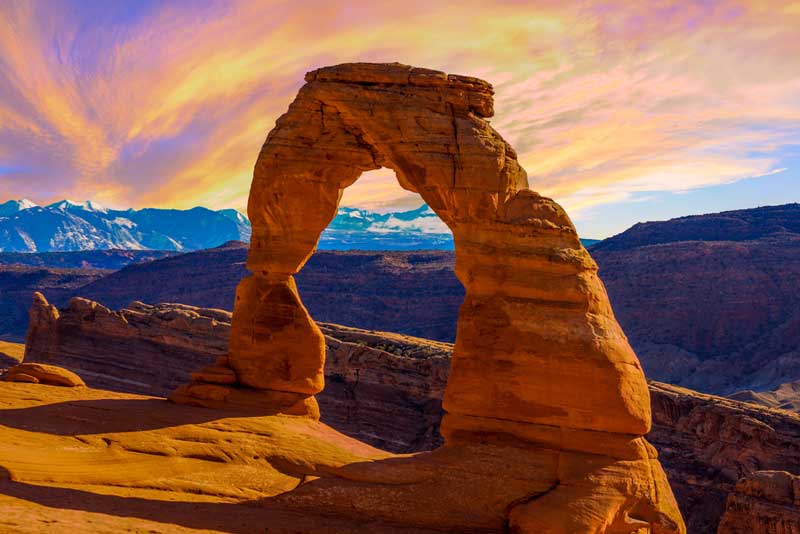
Galyna Andrushko
Arches National Park in Utah is a red-rock wonderland, showcasing over 2,000 natural stone arches, including the world-renowned Delicate Arch.
This landscape of contrasting colors and formations is a result of geological processes that date back 300 million years, creating not only arches but also pinnacles, rock fins, and balanced rocks.
Key attractions include the Landscape Arch, stretching an impressive 290 feet, and Devils Garden, which offers a rewarding hike through a variety of arches and spectacular park views. The park’s Arches Scenic Drive is a must-do, providing access to many of the park’s landmarks.
For those looking for a unique perspective, the Upper Delicate Arch Viewpoint offers a less strenuous option to see Delicate Arch. This park’s unique geological history and striking formations make it a quintessential destination for nature enthusiasts and photographers.
Sequoia National Park
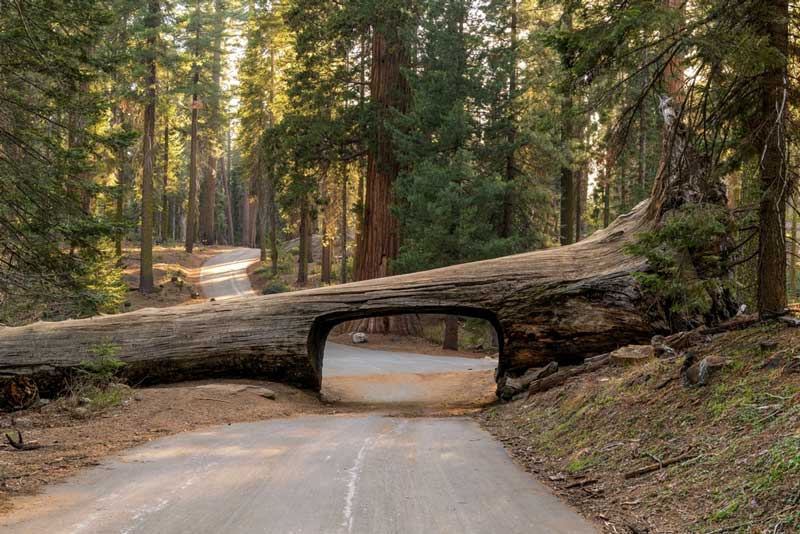
Sequoia National Park
Sequoia National Park, located in California, is renowned for its colossal Sequoia trees, including the General Sherman Tree, the largest tree in the world by volume. The park offers a diverse landscape, with towering Sierra Nevada peaks, picturesque foothills, and serene streams and waterfalls.
Visitors can indulge in scenic drives, hiking, and exploring panoramic views of the park’s breathtaking landscapes. Beyond its natural beauty, Sequoia National Park is rich in history, with evidence of human habitation dating back thousands of years, and historical remnants from mining and logging in the late 1800s and early 1900s.
The park’s cultural heritage, along with its unique geological and ecological features, makes it a place of wonder and exploration.
Joshua Tree National Park
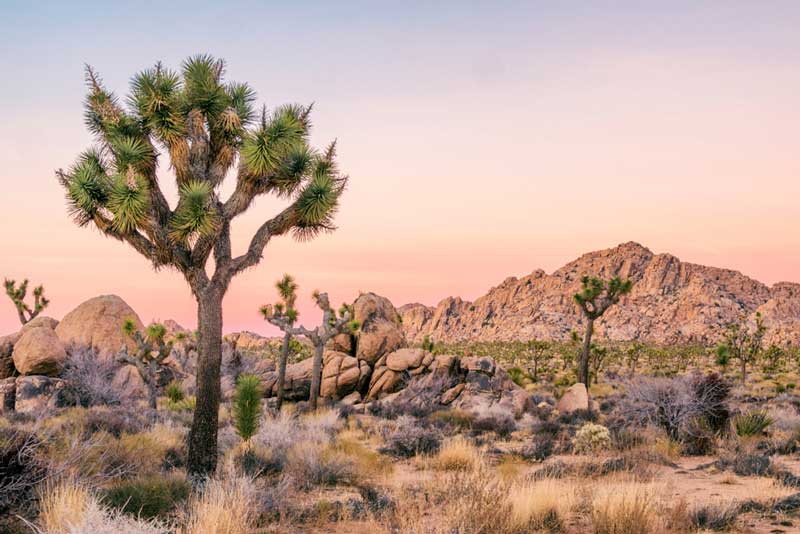
Joshua Tree National Park
Joshua Tree National Park in Southern California is a desert haven known for its fascinating Joshua trees. The park’s unique landscape features a mix of rugged rock formations and desert plains.
It offers a range of activities like hiking, rock climbing, and stargazing, making it a perfect destination for outdoor enthusiasts. The park’s distinct ecosystems, where the Mojave and Colorado deserts meet, create a diverse environment for various plant and animal species.
Joshua Tree is not only a place for adventure but also for tranquility and experiencing the serene beauty of the desert wilderness.
Badlands National Park
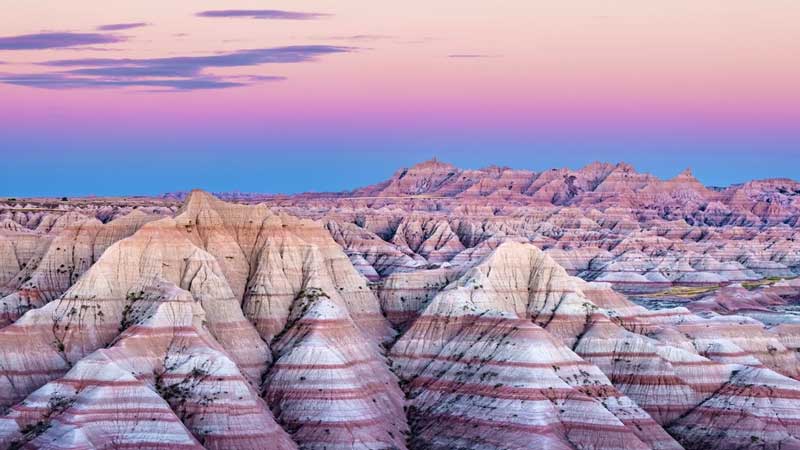
Badlands National Park
Badlands National Park in South Dakota presents a dramatic landscape of eroded buttes, pinnacles, and spires alongside mixed-grass prairies. The park’s geological formations tell a rich story of natural history, with striking layered rock formations that change color with the light.
Visitors can enjoy scenic drives along the Badlands Loop Road, offering stunning views without the need for hiking. However, for those who wish to explore more, the park offers a range of hiking trails, including the chance to hike off-trail in the backcountry.
Wildlife sightings, including bison and bighorn sheep, add to the park’s allure. The unique topography and rich paleontological history make Badlands National Park a fascinating destination for geology enthusiasts and nature lovers alike.
Redwood National Park
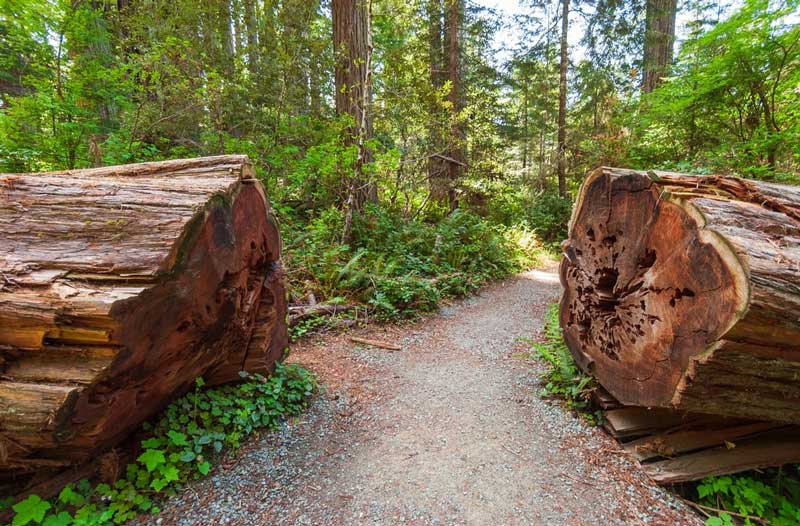
Redwood National Park
Redwood National Park, encompassing a network of national and state parks in Northern California, is home to the world’s tallest trees, reaching over 350 feet. The park offers a unique blend of massive sequoias, ancient forests, scenic beaches, and diverse wildlife.
Key highlights include the Gold Bluffs Beach, where you can camp right on the beach and possibly spot elk, whales, and dolphins. The park is also known for the Avenue of the Giants, a 31.5-mile drive through the Humboldt Redwoods State Park, offering an immersive experience among the giant trees.
For a breathtaking sunset view, visit the Redwood Creek Overlook, which provides a panoramic view of the redwoods and the ocean. Additionally, the Tall Trees Grove and the Boy Scout Tree Trail offer serene hikes among old-growth redwoods. Elk Meadow is another spot worth visiting, especially for wildlife enthusiasts hoping to see the resident Roosevelt elk.
Kings Canyon National Park
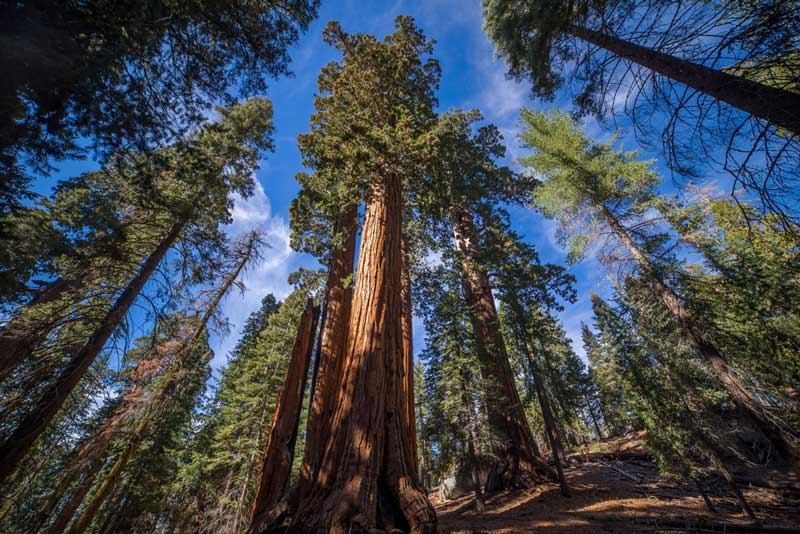
Kings Canyon National Park
Kings Canyon National Park in California is celebrated for its dramatic landscapes, including soaring granite cliffs, deep canyons, and alpine meadows.
The park offers a variety of hiking trails, providing opportunities to explore stunning vistas and unique wildlife, such as the Sierra Nevada bighorn sheep and mountain lions.
Visitors can also engage in outdoor activities like camping, rafting, and fishing, making it an ideal destination for both adventure seekers and those looking for a peaceful escape. The park’s natural beauty and diverse terrain make it a must-visit for nature enthusiasts.
Glacier National Park
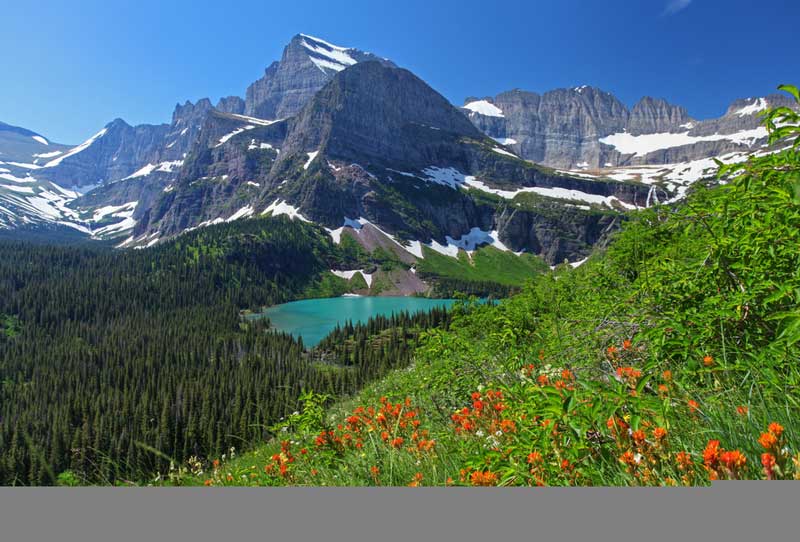
Glacier National Park
Glacier National Park in Montana, known for its stunning mountain landscapes and diverse wildlife, shares a border with Alberta’s Waterton Lakes National Park. Together, they form a unique UNESCO World Heritage Site, an International Peace Park, and a Biosphere Reserve.
The park boasts over 700 miles of hiking trails, making it a paradise for outdoor lovers. Visitors can enjoy scenic drives, such as the Going-to-the-Sun Road, and spot wildlife like grizzly bears, gray wolves, and bighorn sheep.
With more than 130 lakes and numerous streams, boating and fishing are popular activities. The park’s diverse ecosystems and breathtaking scenery make it an exceptional destination for exploration and adventure.
Rocky Mountain National Park
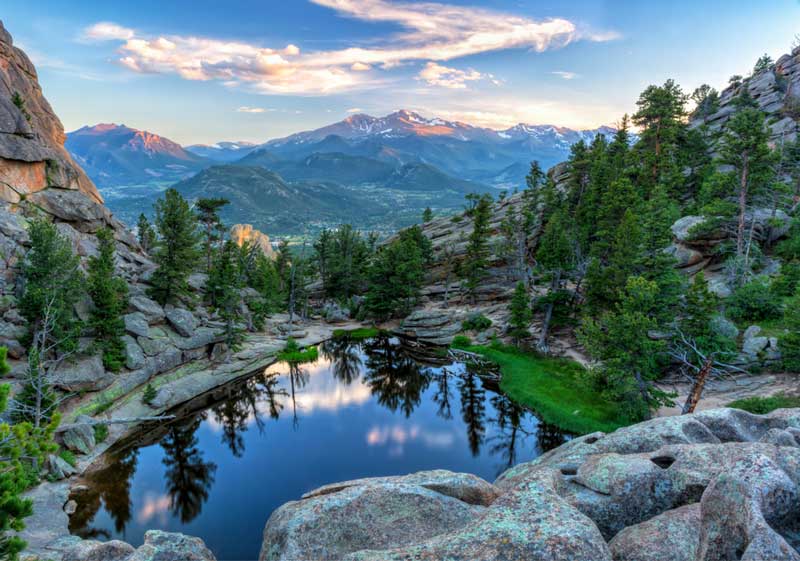
Rocky Mountain National Park
Rocky Mountain National Park in Colorado showcases the majestic beauty of the Rocky Mountains. The park features over 60 mountain peaks exceeding 12,000 feet, with numerous hiking trails leading to stunning alpine lakes and tranquil valleys.
The park is a hiker’s paradise, offering a range of trails for different skill levels. Visitors can explore the iconic Trail Ridge Road, stroll around Bear Lake, and engage in winter activities like snowshoeing and cross-country skiing.
With its abundant wildlife and breathtaking landscapes, Rocky Mountain National Park is a must-visit for nature lovers and outdoor enthusiasts.
Shenandoah National Park
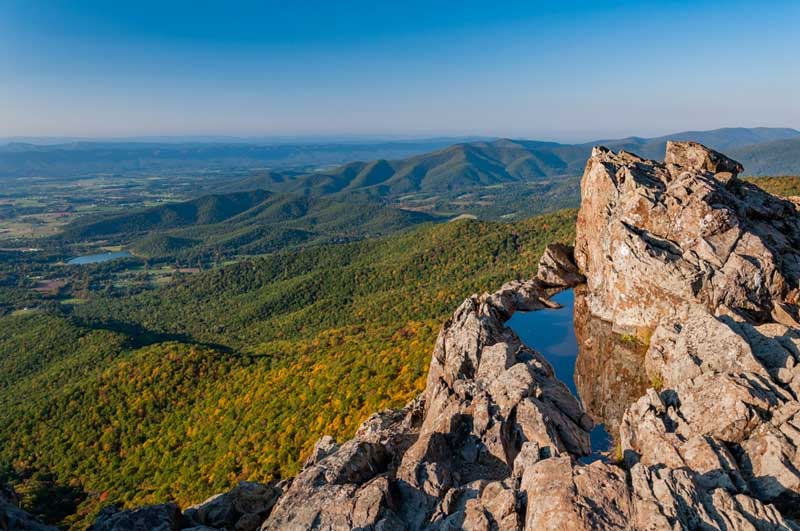
Shenandoah National Park
Shenandoah National Park in Virginia is a haven for nature lovers, boasting cascading waterfalls, spectacular vistas, and a rich diversity of wildlife. The park’s iconic Skyline Drive offers more than 70 overlooks with breathtaking views of the Blue Ridge Mountains and Shenandoah Valley.
Hiking enthusiasts can tackle trails like Marys Rock for panoramic views, or embark on the more challenging Old Rag, known for its exhilarating rock scrambles and summit vistas. The Appalachian Trail also winds through the park, offering a chance to hike a section of this legendary trail.
For those interested in waterfalls, Shenandoah has several beautiful options, such as Dark Hollow Falls and Doyles River Falls, each providing a unique and scenic hiking experience.
Wildlife watching is a popular activity, with opportunities to see animals like white-tailed deer, black bears, and various bird species. The park’s proximity to Washington, D.C. makes it an accessible and enjoyable destination.
Hawaii Volcanoes National Park
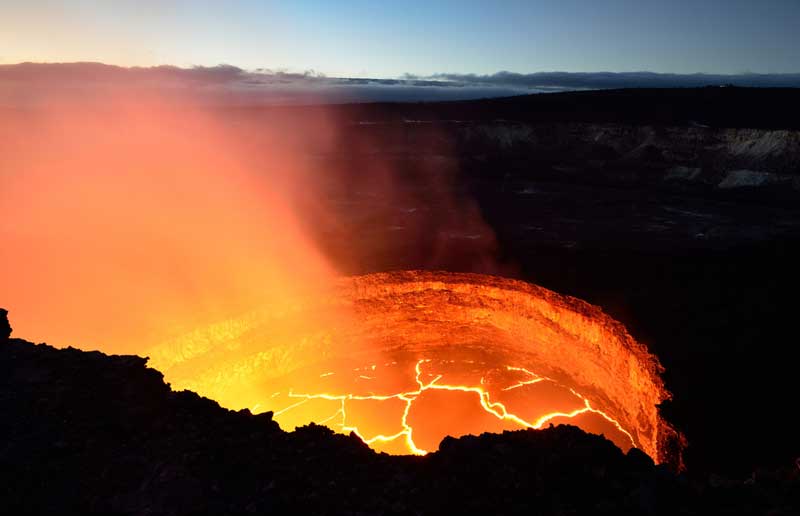
Hawaii Volcanoes National Park
Hawaii Volcanoes National Park on the Big Island of Hawaii is a unique and dynamic landscape where visitors can witness the natural process of land formation. The park is home to two of the world’s most active volcanoes, Kilauea and Mauna Loa, offering a rare opportunity to see active lava flows and volcanic landscapes.
The park’s diverse environments range from lush rainforests to barren lava fields, providing habitats for unique flora and fauna. Visitors can explore the park through scenic drives, hiking trails, and ranger-led programs, gaining insights into the area’s geology, ecology, and cultural history.
The park’s visitor centers provide educational exhibits and information on current volcanic activity, ensuring a safe and informative experience.
Mount Rainier National Park
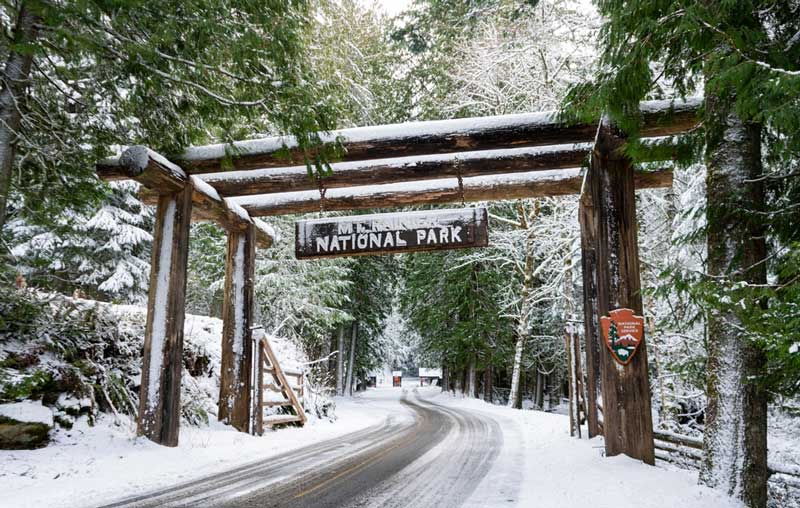
Mount Rainier National Park
Mount Rainier National Park in Washington State is dominated by the towering presence of Mount Rainier, an active stratovolcano that stands as an iconic symbol of the Pacific Northwest. The park offers a range of outdoor activities including hiking, camping, and wildlife viewing.
Visitors can explore the park’s diverse landscapes, from wildflower meadows and ancient forests to glaciers and snowfields. The park’s network of trails caters to all levels of hikers, with paths leading to stunning viewpoints, serene lakes, and cascading waterfalls.
The beauty and majesty of Mount Rainier attract both casual sightseers and adventurous climbers, making it a premier destination for nature enthusiasts and outdoor adventurers alike.
Final Thoughts
The U.S. National Parks offer unique experiences and breathtaking beauty. These protected areas showcase the best of America’s natural heritage, offering something for every nature enthusiast.
These parks not only preserve crucial ecosystems and wildlife but also provide a space for adventure, reflection, and connection with the natural world.
Their continued conservation is essential for future generations to enjoy the awe-inspiring landscapes and rich biodiversity that define the American wilderness.
